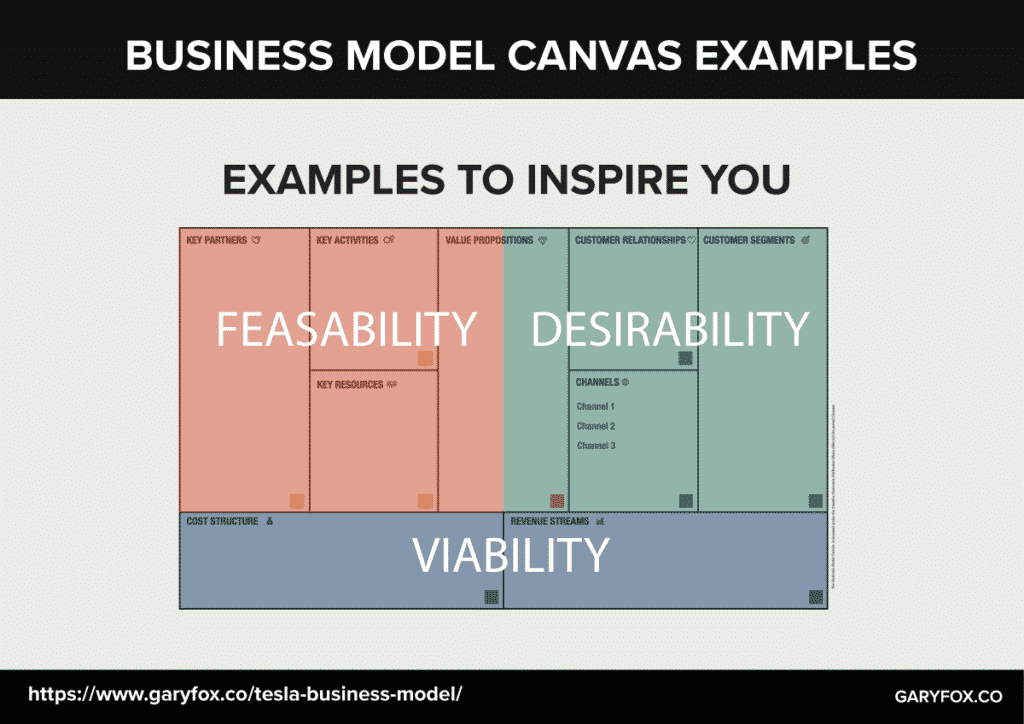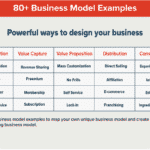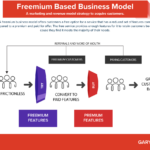These business model canvas examples will help give you create a powerful new business model or transform your current one.
The world is digitizing fast. The average lifespan of companies is dwindling as the pace of technological change is accelerating.
Large scale technological changes provide rich seams of innovative possibilities, opportunities to innovate, but at the same time, they will wreak havoc on incumbent companies entrenched in outdated business models.
Fundamental shifts in working patterns, skills and business design, are all part of these tectonic economic shifts that will ripple through industries of all sizes.
Table of Contents
Scales of Change
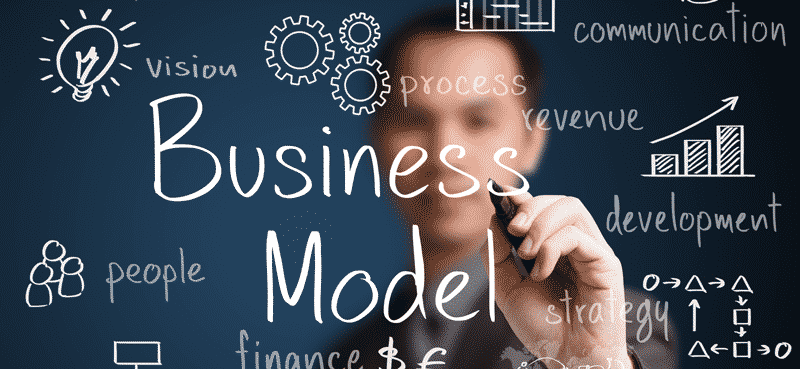
Digitization is creating exponential change and producing scales of change within sectors that would have previously been unheard of with older technologies such as electricity and steam.
As an example, new digital technologies mean that a standard 10-pound satellite can now capture better images of any point on Earth than a 900-pound satellite 20 years ago (Metz, 2019).
Other examples include the cost of drones in 2007 $100k. Today, anything from $300 will get you a drone that will outperform the 2007 model.
The Imperative for Business Model Innovation
In a globalizing world economy, the reason for differences in economic growth is explained on the grounds of technological differences.
Despite the need to change business models, many companies though seem blind to the need to change.
Industry 4.0 and the associated convergence of AI, sensors (IOT), robotics etc are transforming traditional linear companies into interconnected ecosystems: non-linear and modular in design
Yet, a recent survey examined how firms were preparing for AI. All the firms were significant in size, they had a turnover of $500m or more. The results of the survey showed that only 5% had mapped AI opportunities. But a more horrifying revealing outcome was that 56% had no plans for AI.
Clearly many companies do not recognize how the landscape is changing.
New and emerging technologies substantially change value across production, distribution as well as marketing. In other words, across the full range of the value chain. And as a result, offer the potential for a competitive advantage to those that harness them.
Understanding how technologies, such as AI, will potentially disrupt your model is a crucial step in business model innovation.
If you do not already know how to use the business model canvas, then these examples might provide you with ideas.
Click on the above link to download a business model template in either pdf, MS Excel, PowerPoint or Word.
- Business model canvas examples – complete canvas models
- Business model canvas examples – by section.
Business Model Canvas Examples
These are some of the biggest and most striking business models because of their disruptive power.
1. Facebook Business Model Canvas Example
The Facebook business model is continually changing. The ecosystem of services has now expanded to include its first major product launch the portal.
| Company name: | Facebook Inc |
| Founders: | Mark Zuckerberg, Eduardo Saverin, Andrew McCollum, Dustin Moskovitz and Chris Hughes. |
| Annual revenue: | 2019: $70.7 Billion |
| Profit | Net Income: | 2019: $18.49 Billion |
| Market Cap: | (April, 2020): $203.9 Billion |
| Year founded: | 2004 |
| Company CEO: | Mark Zuckerberg |
| Headquarters: | Menio Park, California, USA |
| Link: | |
| Number of employees: | (Dec, 2019) 44,942 |
| Type of business: | Public |
| Ticker symbol: | FB |

2. The Netflix Business Model Canvas
The Netflix business model continues to do well but faces more intense pressure from a range of competitors.
| Company name: | Netflix |
| Founders: | Reed Hastings and Marc Randolph |
| Annual revenue: | 2019: $20.16 Billion |
| Profit | Net Income: | 2019: $1.86 |
| Market Cap: | (April, 2020): $423 Billion |
| Year founded: | 1997 |
| Company CEO: | Reed Hastings |
| Headquarters: | Los Gatos, USA |
| Link: | Netflix |
| Number of employees: | (FY 2019): 8,600 |
| Type of business: | Public |
| Ticker symbol: | NLFX |
| Products And Services: | Video On Demand, |
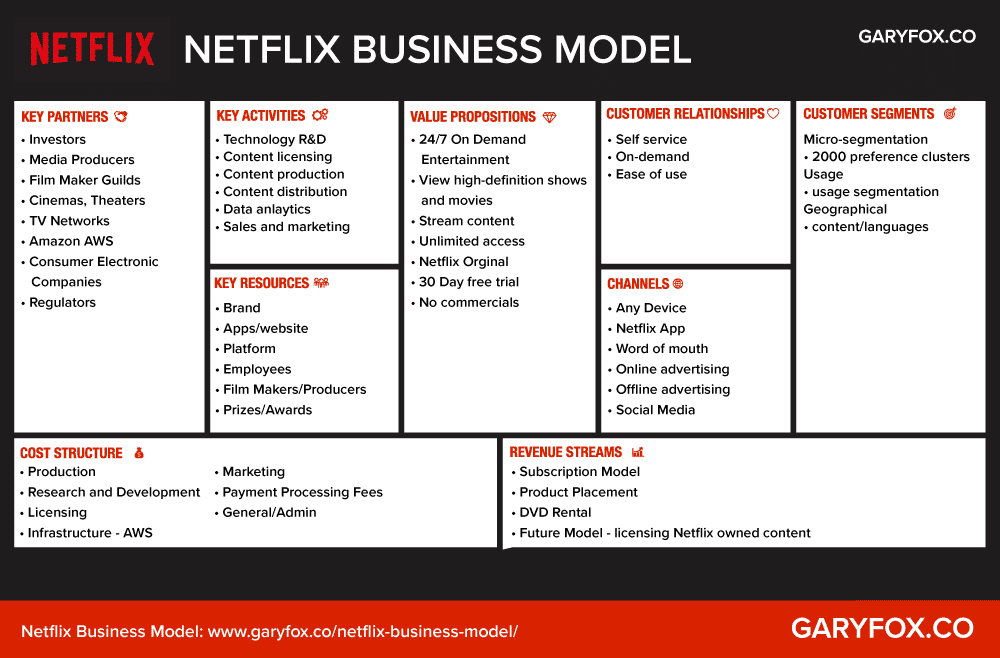
3. Airbnb Business Model example
Airbnb was heading towards an IPO in 2020. But COVID has devastated the travel industry and left Airbnb vulnerable. Airbnb hosts are panicking. As the bottom drops out of the travel industry, Airbnb could see millions of rooms taken off the market. The Airbnb business model is looking exposed because of these dramatic changes.
The double whammy is that Airbnb guests were often people attending events. But, like the travel industry, COVID has decimated the events industry.
| Company name: | Airbnb |
| Founders: | Brian Chesky, Nathan Blecharczyk, Joe Gebbia |
| Annual revenue: | (FY 2019): $4.8 billion |
| Year founded: | 2008 |
| Company CEO: | Brain Chesky |
| Headquarters: | San Francisco, California |
| Link: | Airbnb |
| Number of employees: | (FY 2019): 12,736 |
| Type of business: | Private |
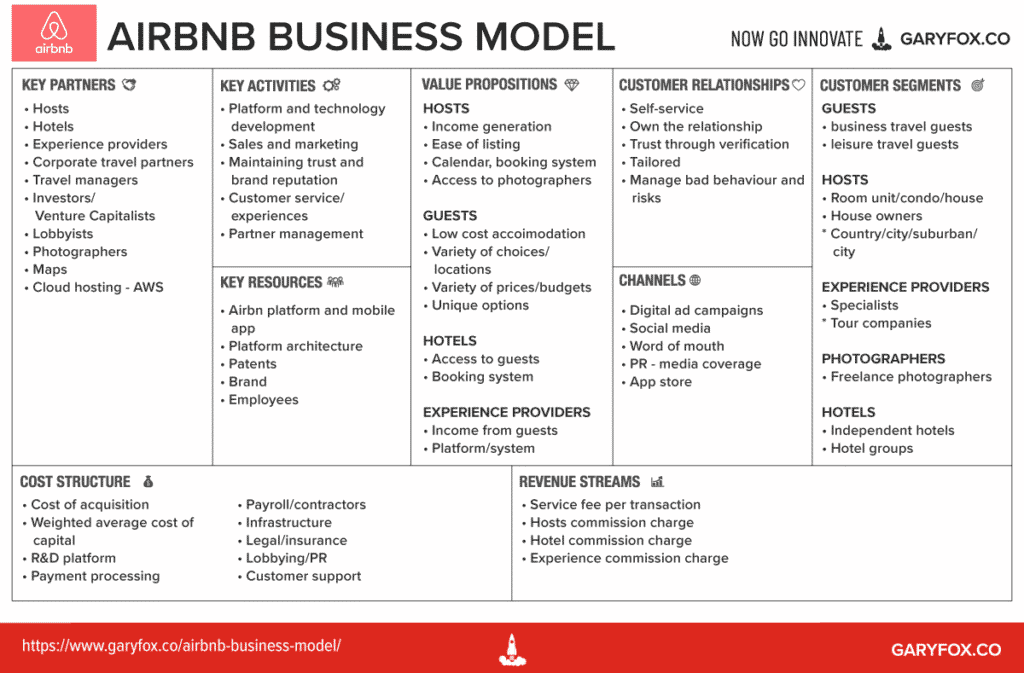
4. Tesla Business Model Example
The Tesla business model is based on its technological advantage. The Tesla car is a computer on wheels. A different approach and model to its competitors.
| Products And Services: | Model S, Model 3, Model X, Model Y, CyberTruck, Roadster, Energy (commercial and domestic) |
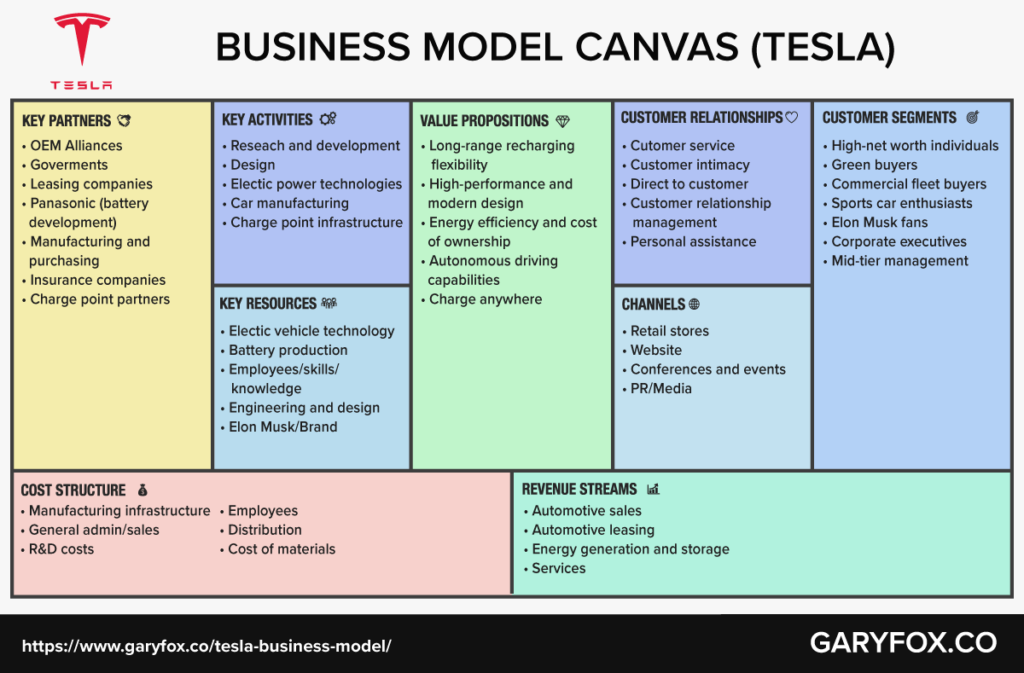
Other Business Model Canvas Examples
There are other types of business models that fit to different circumstances. Here are a few that might apply to you, particularly if you are focused on the circular economy.
The Flourishing Business Canvas
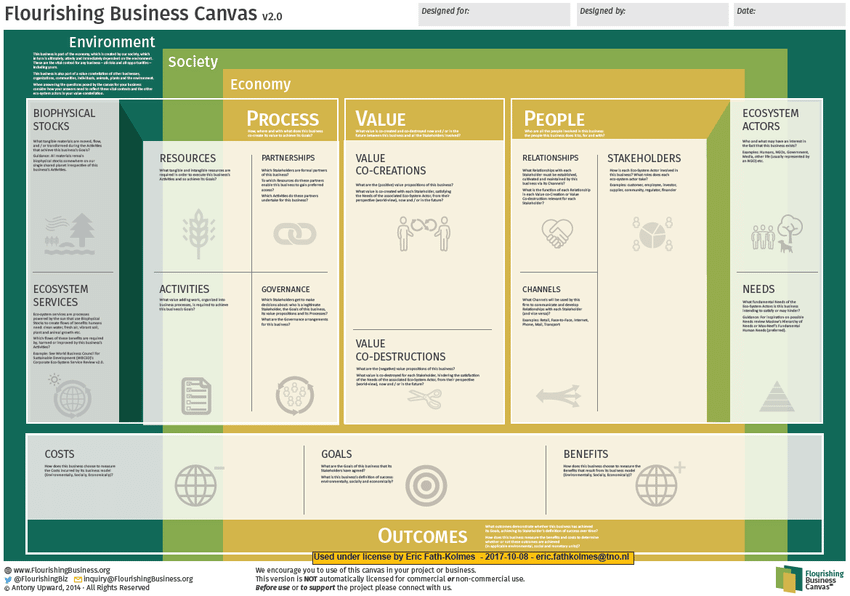
The Canadian researchers deconstructed the Business Model Canvas and re-assembled it by adding dimensions of sustainability thinking. They argue that the 9 building blocks of the Business Model Canvas help a company to “do well” but in order to “do good”, 5 more questions are required.
In order for a company to do “well” and “good”, only five more questions were added to the existing 9 of the business model canvas which resulted in the 16 new building blocks of the Flourishing Business Model Canvas that takes respect of the economy, society and environment. The building blocks are valued co-creation and co-destruction, relationships, channels, stakeholders, ecosystem actors, needs, partnerships, governance, resources, activities, biophysical stocks, ecosystem services, goals, benefits and costs.
Fluid minds framework for a successful business
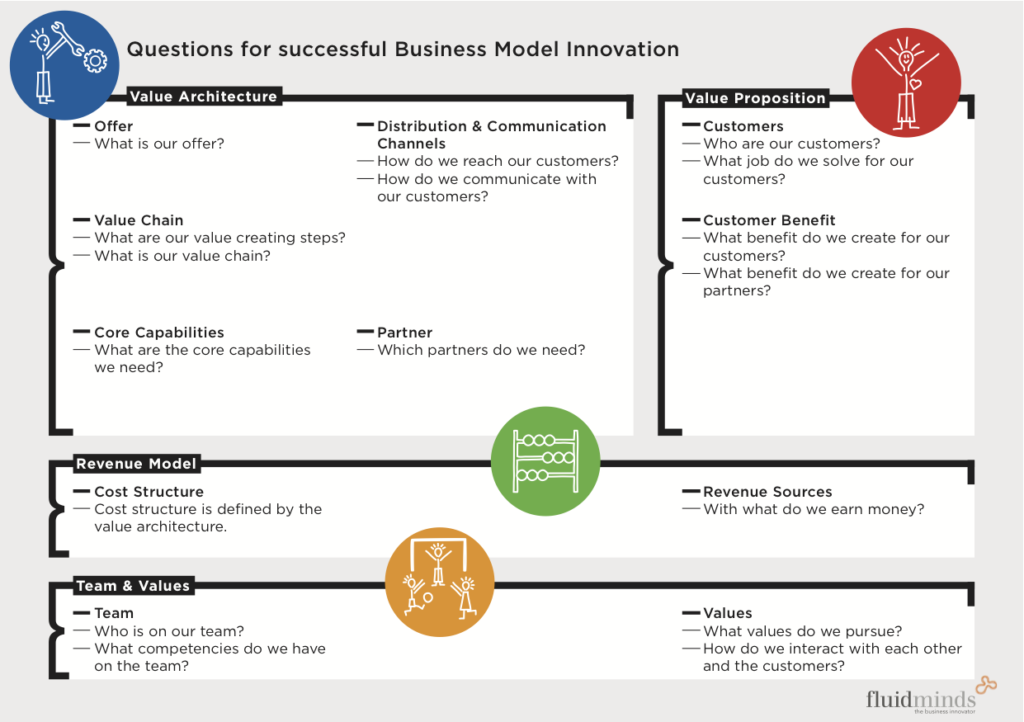
The BMF sets the focus on a company’s values, therefore it depicts the value proposition for the customer, but as well the architecture and the value chain. Unlike other BMF it as well shows the internal values of the company. In each building block except the revenue model, the BMF explores different aspects of the value creation.
Business Model Navigator
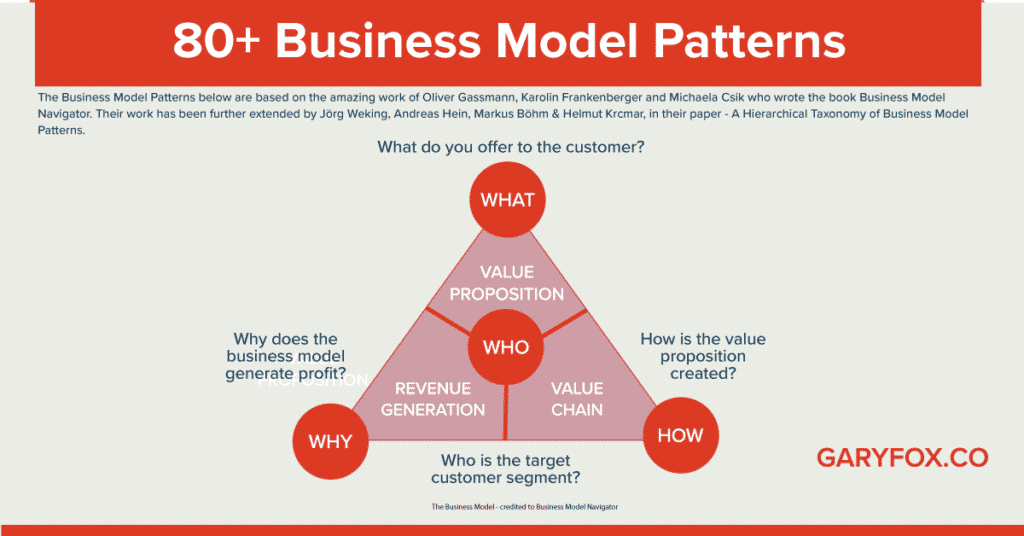
The Business Model Navigator framework focuses on answering four associated questions:
- who is the target customer?
- what do you offer to the customer?
- how is the value proposition created?
- why does the business model generate profit?
The Lean Startup Canvas
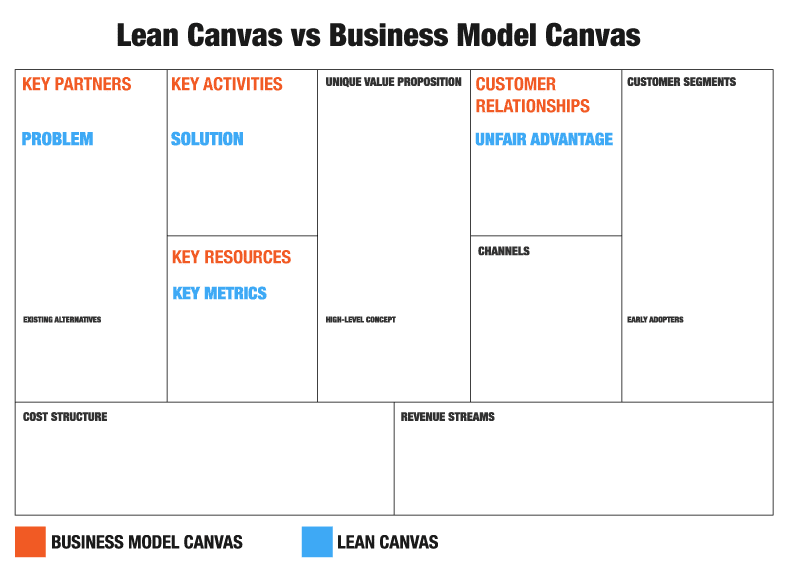
One of the reasons for the success of the business model canvas is that it provides a framework and structure to guide though.t –1Martins, L. L., Rindova, V. P., & Greenbaum, B. E. (2015). Unlocking the hidden value of concepts: A cognitive approach to business model innovation. Strategic Entrepreneurship Journal, 9, 99–117.
Many entrepreneurs have struggled with the Business Model Canvas because assumes that an organisation exists. For this reason, Ash Maurya created the Lean Startup Canvas. The Lean Canvas promises an actionable and entrepreneur-focused business plan. It focuses on problems, solutions, key metrics and competitive advantages.
For more details take a look at how to use the Lean Startup Canvas.
7.5 Moonfish Circular Business Model
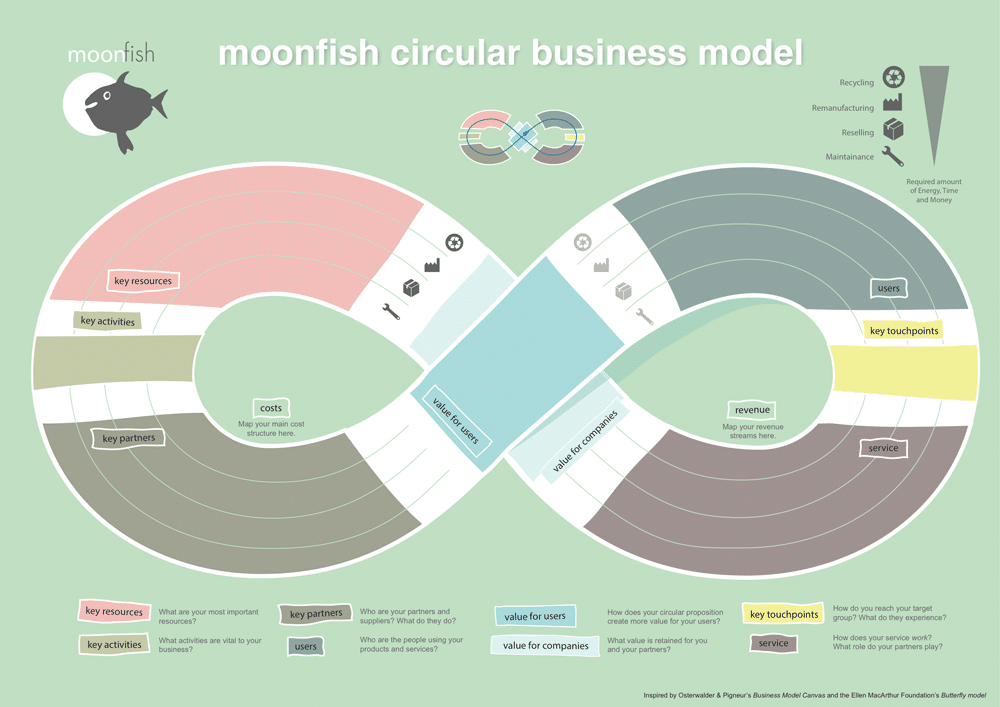
This business model tool is based on Osterwalder & Pigneur’s Business Model Canvas and the Ellen MacArthur Foundation’s Circular Economy System Diagram. It shows different cycles of maintenance, reselling, remanufacturing and recycling. The framework takes after the infinity symbol, in order to emphasize the ongoing process of circular business (it never ends). The smaller cycles require less time, money and energy. The value of the Circular Economy is embedded in each of the four cycles.
